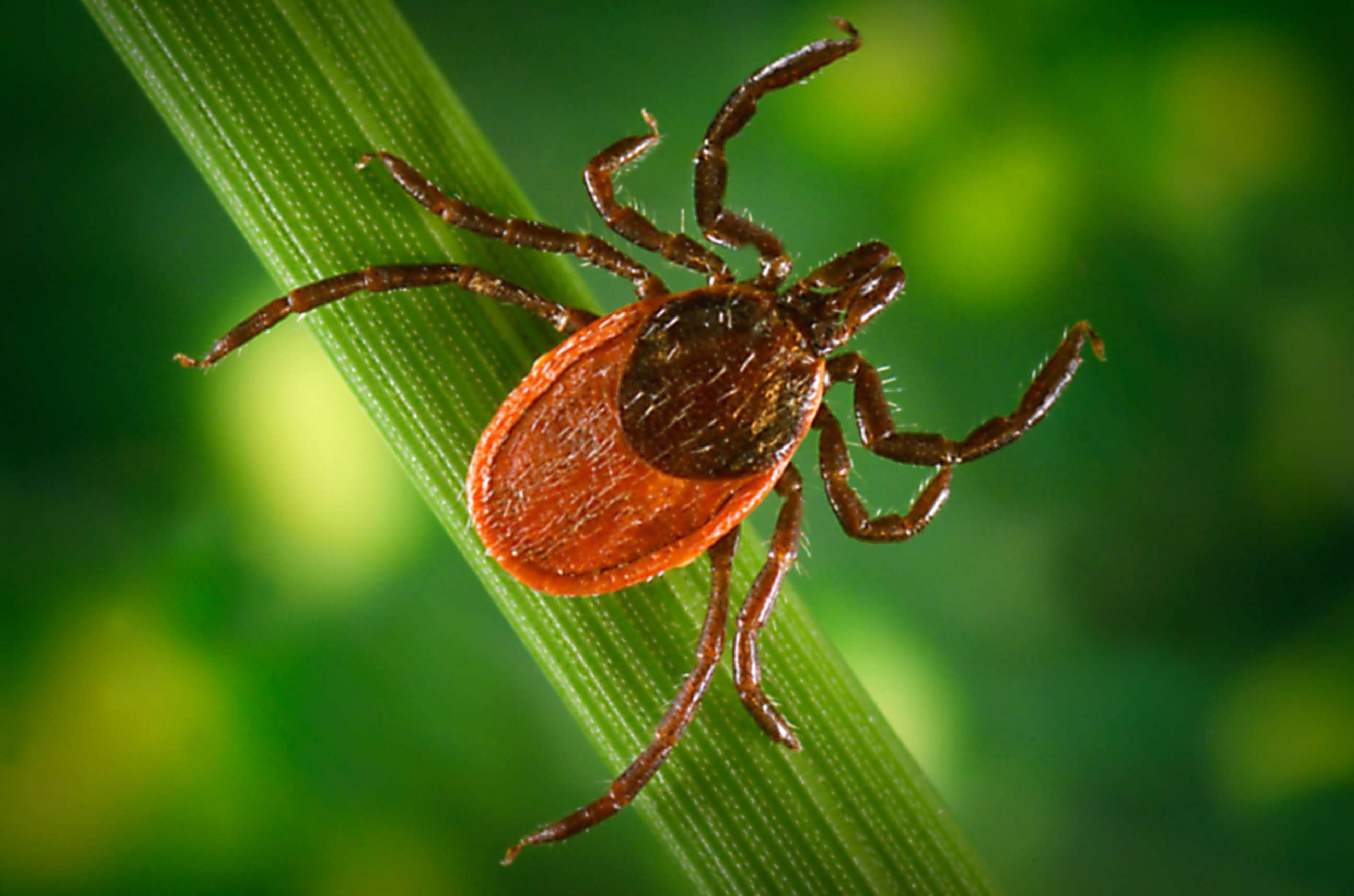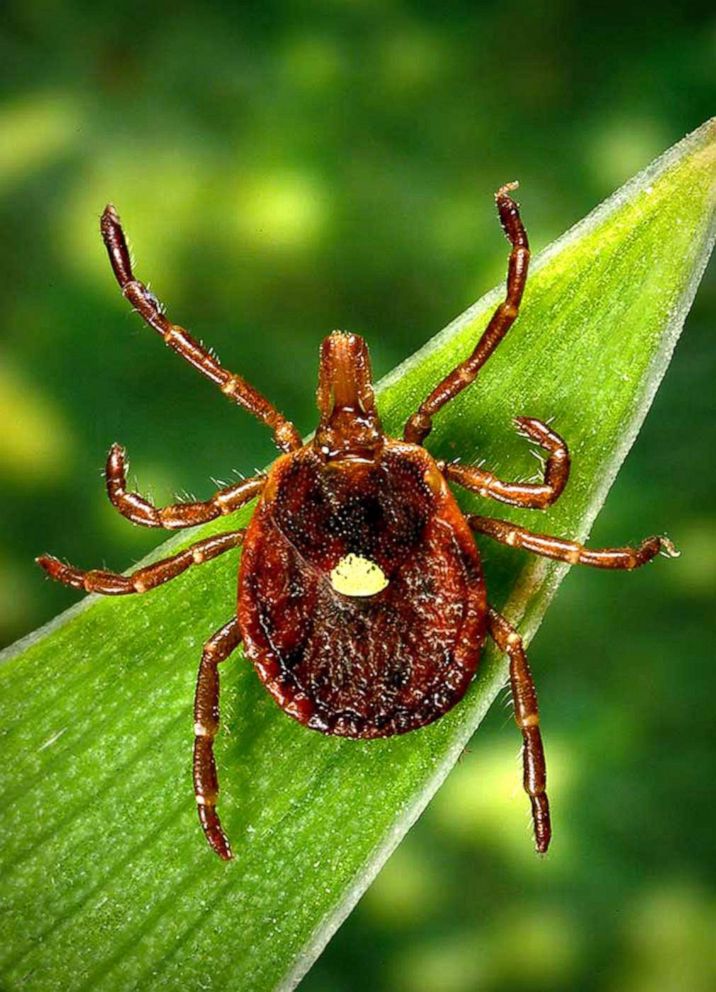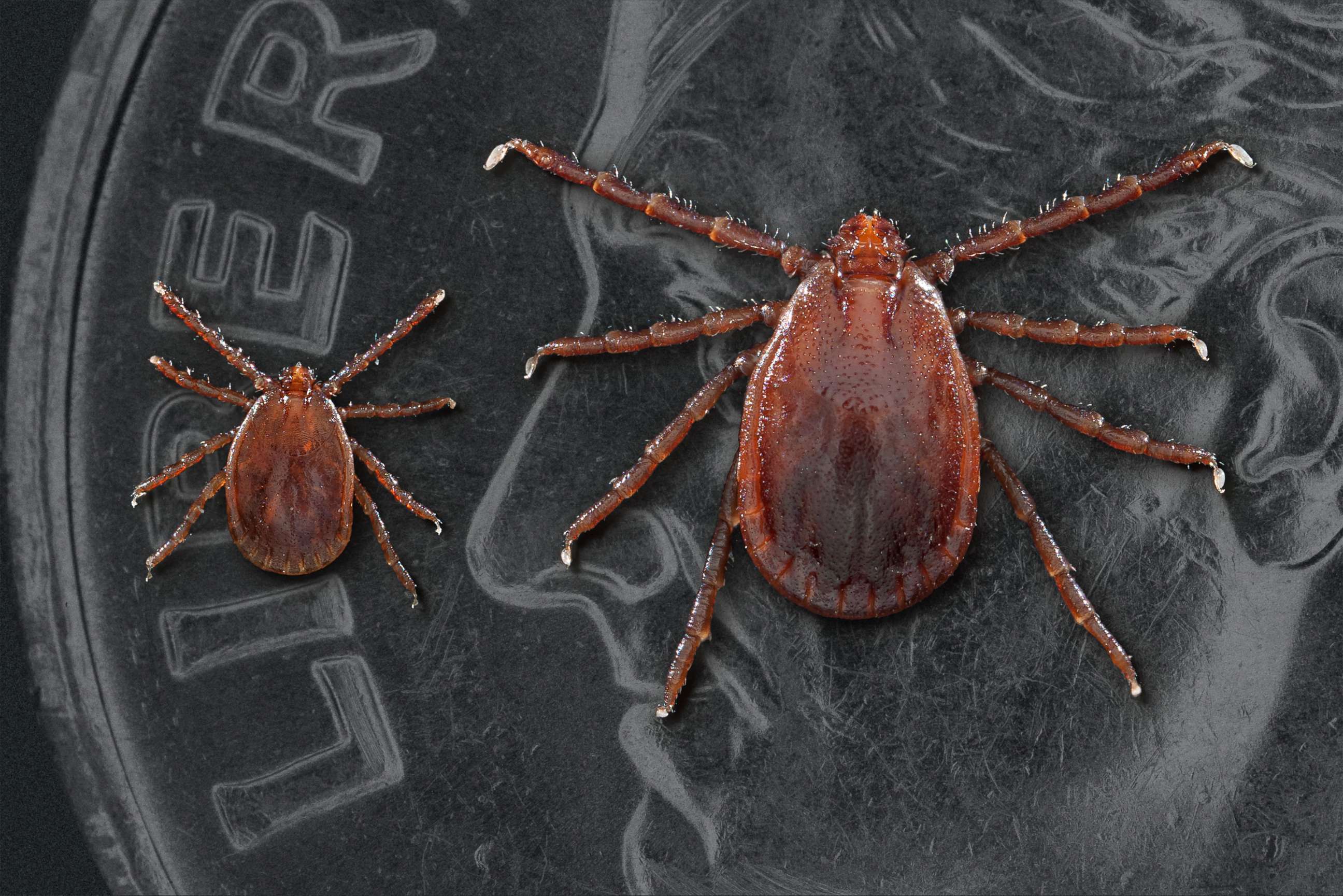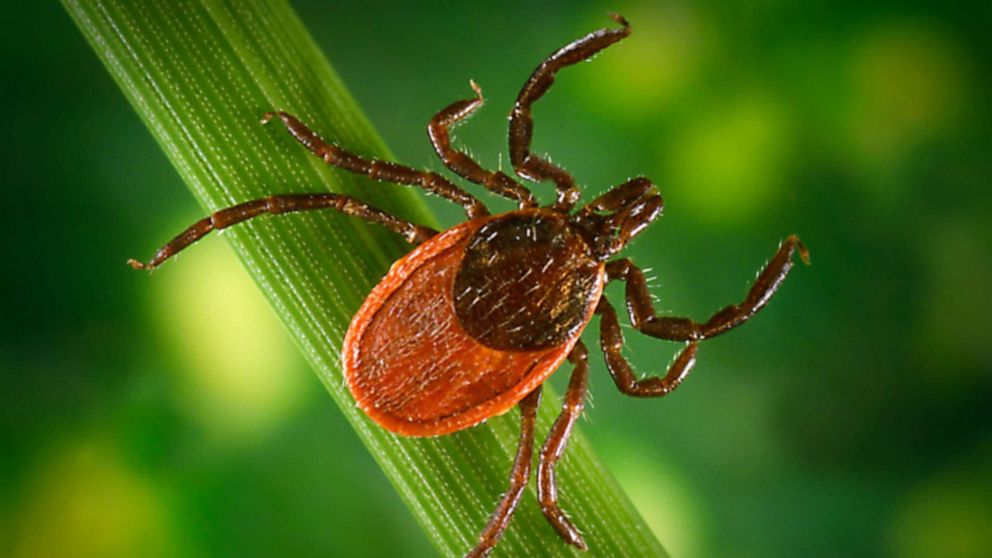Why this tick season may be bad – and how to protect yourself
It's the peak season for tick nymphs across many parts of the United States, and experts are warning that this could be a particularly bountiful year for the minuscule, potentially disease-carrying bugs.
Each spring and summer, Jean Tsao dons a white tick suit and goes out into fields throughout Michigan to study the prevalence of the black-legged tick, which transmits Lyme disease, the most common vector-borne disease in the U.S. A recent report from the Centers for Disease Control and Prevention suggests that approximately 476,000 Americans are diagnosed and treated for Lyme disease each year.
Along with her team, Tsao, an associate professor in the Department of Fisheries and Wildlife and the Department of Large Animal Clinical Sciences at Michigan State University, will drag a white cloth along thousands of meters to see how many ticks they collect. So far this season, they have already collected more ticks than they did all of last summer, when they dragged until mid-July and covered a greater distance.
"A colleague in Connecticut said their nymphal numbers were up by 85% right now," Tsao told ABC News. "I think the trend is overall numbers are higher, but it's not seen everywhere."
Prime time for Lyme disease transmission
Tick nymphs are very tiny -- about the size of a poppy seed -- which can make them difficult to detect and that much more effective at spreading disease. According to Tsao, about 1 in 4 black-legged tick nymphs carry Lyme disease, which may cause fever, headache, fatigue and could spread to the heart, joints and nervous system if left untreated. That number is likely as high as 1 in 3 in more endemic areas, like parts of the Northeast, she said.
"Most cases of Lyme disease occur in the summer, and it's much more associated with the nymphal stage," Tsao said. "That's a testament to their small size and difficulty in being detected."
Lyme disease-carrying ticks aren't just found in Northeast woodlands; researchers have discovered them in the coastal scrub of California -- beyond typical West Coast habitats like oak woodlands.
Dan Salkeld, a research scientist in the Department of Biology at Colorado State University, is a co-author of a recent report on the prevalence of tick-borne diseases in California. They found Lyme disease-carrying western black-legged ticks in coastal scrub in northwest California almost accidentally, he told ABC News.

"We would have thought that there may be ticks [there], but they wouldn't be infected," said Salkeld, noting there wasn't an obvious Lyme disease-carrying animal in the area that the ticks would feed on. "We tested them anyway. We found that the infection levels were pretty much exactly the same as for adult ticks in nearby oak woodlands."
"That just leaves a big gaping hole of what exactly is infecting these ticks," he said. "We don't really know."
Aggressive lone star tick 'really abundant'
Maria Diuk-Wasser, a professor in the Department of Ecology, Evolution and Environmental Biology at Columbia University, studies the ecology and epidemiology of vector-borne diseases in the Northeast, particularly in black-legged ticks.
Recently, she also has increasingly come across another tick that has made its way north: the lone star tick. In addition to being the primary carrier of the bacteria that can cause the illness ehrlichiosis, the tick is associated with a red meat allergy known as alpha-gal syndrome.
"It's becoming really abundant," Diuk-Wasser told ABC News of the tick.

She believes the tick may be becoming more prominent than the black-legged tick in Long Island, New York.
"The numbers grow very fast because they have a lot of eggs, a lot of offspring," she said. "Populations grow faster."
The lone star tick -- identified by a white dot on adult females -- is also known for being more aggressive than the black-legged tick.
"It walks towards you," Diuk-Wasser said. "The black-legged tick stays in one place, but this one actually moves relatively fast and crawls toward CO2-emitting organisms. It's a big problem."
Diuk-Wasser has also observed the spread of the Asian longhorned tick, which was first reported in the U.S. in 2017, though hasn't found any with pathogens.

What's fueling the spread
There are several factors that could contribute to the spread, and population growth, of ticks. One is climate change -- shorter winters mean more time for ticks to feed on hosts and grow, Tsao said. A warming climate has also helped the lone star tick, which is more prevalent in the south, creep farther north.
Higher populations of small mammals like chipmunks and voles, which ticks feed on, can also help.
"Last year was a big vole year," Tsao said. "Vole, in particular, can help feed the juvenile stages of the dog tick."
Dog ticks, which are primarily prevalent in states east of the Rocky Mountains, can spread Rocky Mountain spotted fever and tularemia, though to a lesser extent than Lyme disease transmission, Salkeld said.
Moisture or humidity can also help ticks thrive. The ongoing drought in Michigan could potentially negatively impact nymphal ticks this year, Tsao said.
Prevention and protection
The peak season for nymphal ticks is May and June, while for adults it's in the fall and early spring. However, with warmer winters people could encounter ticks year-round.
For Salkeld and Tsao, the spread of disease-carrying ticks and their presence in unexpected places like beaches sends a message to be proactive and understand your local risk.
"I think part of the issue in California is people are not quite as aware," Salkeld said. "I don't think they need to be to the same extent as the Northeast, it's not the same level of problem, but if you can be vigilant and prevent problems, that's fantastic."
"Still there is a learning curve," Tsao said.
Tsao and Diuk-Wasser helped develop The Tick App, a crowdsourcing effort to report tick encounters. Preliminary data from the app found that in the Northeast, a lot of exposure risk came from around people's houses, while in the Midwest, it was mostly recreational exposure, Tsao said.
"We're trying to find out what behaviors work, and it could be different regionally, and tailor our messages better or see what people are willing to do so maybe we can amplify and focus on those methods," she said.
To help prevent a tick from biting, the experts ABC News spoke with recommended avoiding going into tick habitats and staying on paths while hiking. You can wear light-colored clothing to better detect a tick crawling on you and spray your clothes with tick repellants.
Taking a shower when you get home and conducting regular tick checks over the next few days is also key. The tick needs to be attached for 36 to 48 hours or more before the Lyme disease bacterium can be transmitted. Dog owners should also check their pets daily.
If you find a tick crawling on or attached to you, you can save it or take a picture to help identify it. The size of the tick can also help determine how long it fed on you.
"We want people to enjoy the outdoors," Diuk-Wasser said. "But of course you have to be aware."




